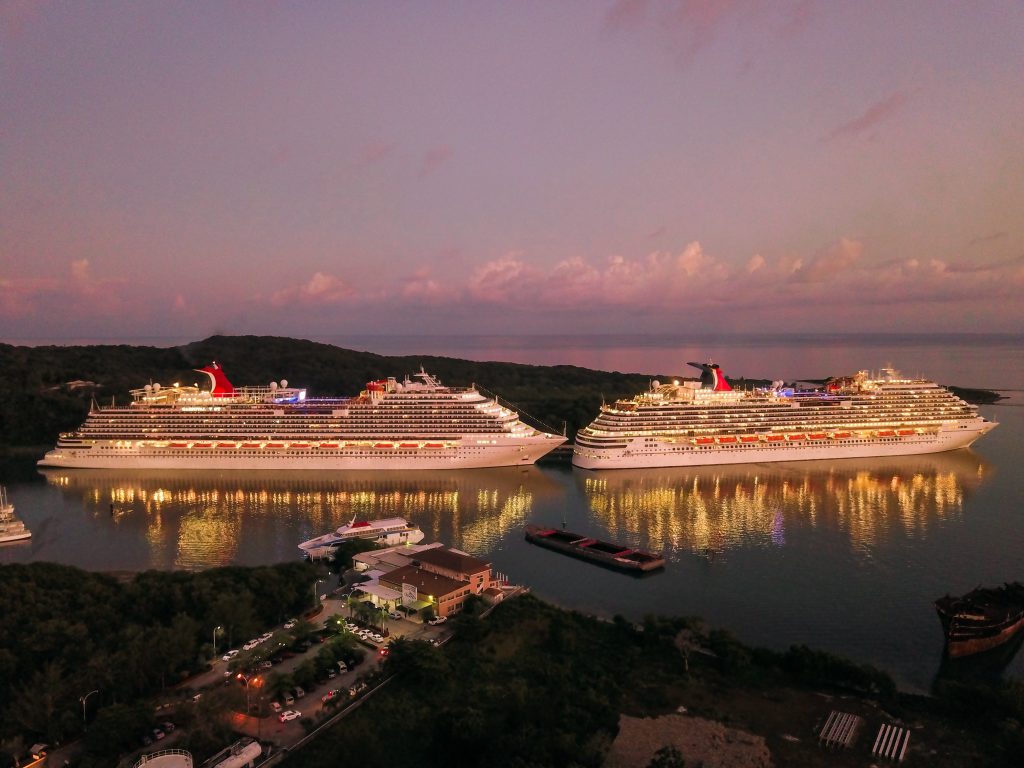By Chevanev Charles
The views in this article are the views of the writer only.
There is a statement that goes “without seafarers, half the world would starve while the other half would freeze.” The shipping industry would grind to a halt without seafarers and their contribution to their countries is a key factor in economic development. Hundreds of thousands of seafarers are currently stranded on ships which cannot proceed to sea because of “no sail orders” and cannot be allowed to disembark because of lockdown initiatives. The novel COVID-19 Corona Virus has caused many nations to close their borders leaving the welfare of seafarers in question. This pandemic has sparked a lot of debate on the responsibility of the return or repatriation of seafarers.
It is the profound misfortune of seafarers to see the news of COVID-19 victims and not be able to physically be there with their families. Many seafarers go to sea for many months at a time but with the dimensions that this pandemic brings there is a legitimate cause for serious concern. The emotional, financial, and psychological well-being of seafarers onboard ships that are currently caught between a rock and a hard place is a tremendous ordeal. All seafarers who are waiting to come home are encouraged to take care of their psychological well-being and to persevere in this very difficult period. The value of seafarers normally goes unnoticed but there are many at-home who look forward to their safe return and the preventive measures that are being put in place to make that a reality.
With this in mind, who is really to bear the responsibility of bringing the seafarers home? Should Governments cover the repatriation? Should the Shipowner? Or should the seafarer be left to be responsible for themselves? International law provides an answer.
To answer this question of responsibility, we must first proceed with the understanding that it is the law of the country where the ship is registered or “flagged” that applies to the ship. This is trite international law enshrined in the United Nations Convention on the law of the Sea, 1982. This means, for example, that if the ship is flagged in the Bahamas or the United Kingdom then it matters what law the Bahamian or UK Authorities choose to apply to their registered ship. It also matters where the ship is moored or docked as the ship must abide by the laws of that state once it is within its jurisdiction or applicable maritime zone.
A Flag State is a country in which a vessel is registered. A Port State is the country in which a ship is currently docked, moored or berthed.
The International Labour Organisation has considered the holistic wellbeing of seafarers and in response, has amalgamated several conventions to construct the international convention called the “Maritime Labour Convention 2006, as amended.” This “super” Convention outlines the rights, responsibilities, and obligations of several actors including shipowners, seafarers, the Flag State, the Port State, and a seafarer national’s home state. There are currently over 90 Member States to this Convention.
Many Countries that are a party to this Convention have incorporated the text of the Convention into their national legislation, in essence, and in many cases verbatim. The “MLC 2006” has regulations, standards, and guidelines that are enforceable concerning its Member States. When a country incorporates an international convention, it may make reservations or “caveats” to change how parts of the Convention should apply to that country.
Of particular relevance to this question of responsibility is Title 2: Conditions of Employment, Regulation 2.5: Repatriation (see page 35). The purpose of this regulation is to clearly outline the obligations and responsibilities of the Member States and ship owners regarding the repatriation of seafarers. The intent is to ensure that the seafarers return home safely.
Seafarers’ Right To Be Repatriated?
According to Regulation 2.5(1), seafarers have a right to be repatriated at no cost to themselves. This means that not only are seafarers entitled to repatriation but requesting seafarers to contribute to their repatriation costs will be against international obligations of this code unless through reservation national law of a particular country articulates another scenario. In the general understanding of the MLC, except where the seafarer breaches the employment agreement, the position regarding repatriation is that seafarers should not directly or indirectly be required to pay for the cost of repatriation. (Regulation 2.5 (3), (5)(c))
Each Member of the MLC must require its registered ships to provide “precise” financial security, in other words, clear insurance provisions detailing the entitlements of seafarers if they qualify to come home. (Reg 2.5(2)(4))
Should a seafarer find his or her contract to include terms that are contrary to these provisions, it is highly recommended that an MLC complaint is made when he or she goes ashore or contact the ITF here.
Who has primary responsibility?
The primary responsibility of repatriating a seafarer is on the shipowner and not the government of the seafarer’s home state. There are circumstances where a shipowner is unable or refuses to repatriate seafarers and the MLC places the second responsibility on the Flag State of the ship.
Where the shipowner and the Flag State fail to make arrangements or meet the cost of repatriation then the Port State or the seafarer national’s home state may step in. Under Regulation 2.5(5), where the Port State or home state who is a member of the MLC covers the cost of repatriation, they are entitled to recover the cost from the “Member whose flag the ship flies.” This means that the seafarer national’s home state, provided they are a party to the convention may bring suit against or otherwise obtain the cost of repatriation from the Flag State of the ship. The Flag State will recover the cost of repatriation from the shipowner which may for stranded seafarers be a faster method of getting home. (Regulation 2.5(5))
Long Term Relationships and other considerations
Many shipping sectors around the world are significantly affected as ports are closed and many cannot proceed to sea. The shipping sector has been hit its hardest perhaps in modern history. This current crisis means that insurance premiums are likely to be significantly elevated for the future as there will be many claims for repatriation. In some cases, some insurance companies may not at all pay-out, dependent on the insurance provisions, because of the novelty of this crisis. In the case of cruise ships, according to various articles on Forbes.com, the virus has severely impacted their share prices, some as much as 85%, as investors react to the short-term implications of lockdown measures. Cruise ships will be looking for cost-effective packages and assistance from the State to implement their MLC obligations.
Despite it not being their primary responsibility, some governments, like the Philippines, are taking the “softer approach” and have assisted the shipping industry through chartered ships and flights for their seafarer nationals who wish to return home as well as offering other assistance. Many countries are taking this softer approach towards ships because they value the long-term relationship. Like any relationship, in a crisis, one remembers the actions of those who chose to help and those who chose to take advantage. Shipowners have taken a serious financial hit but it is unlikely that this is fatal to the industry. Countries that take the softer approach will likely benefit when the pandemic is brought under control. Many countries depend on the recruitment of ships for their seafarers who in turn send back remittances that benefit the development of those countries.
Ultimately, playing the blame game serves no purpose, repatriation is a very complex matter and many countries are currently negotiating novel repatriation packages. This pandemic is unprecedented and our primary concern should be the well-being of the seafarers. Seafarers will always be needed and the entire world continues to depend on shipping. We should work together to find creative and cost-effective solutions to bring them home safely. Governments that are prioritizing their seafarers’ needs and even bothering to negotiate on their behalf should be applauded. Seafarers need our support and they deserve it because these men and women sacrifice so much to maintain the shipping industry and have prevented, in many ways, half of us from starving and the other half from freezing.
Chevanev Charles is a graduate of the International Maritime Law Institute in Malta. He is a practising lawyer and consultant who specializes in international maritime law. He is reachable on [email protected]

